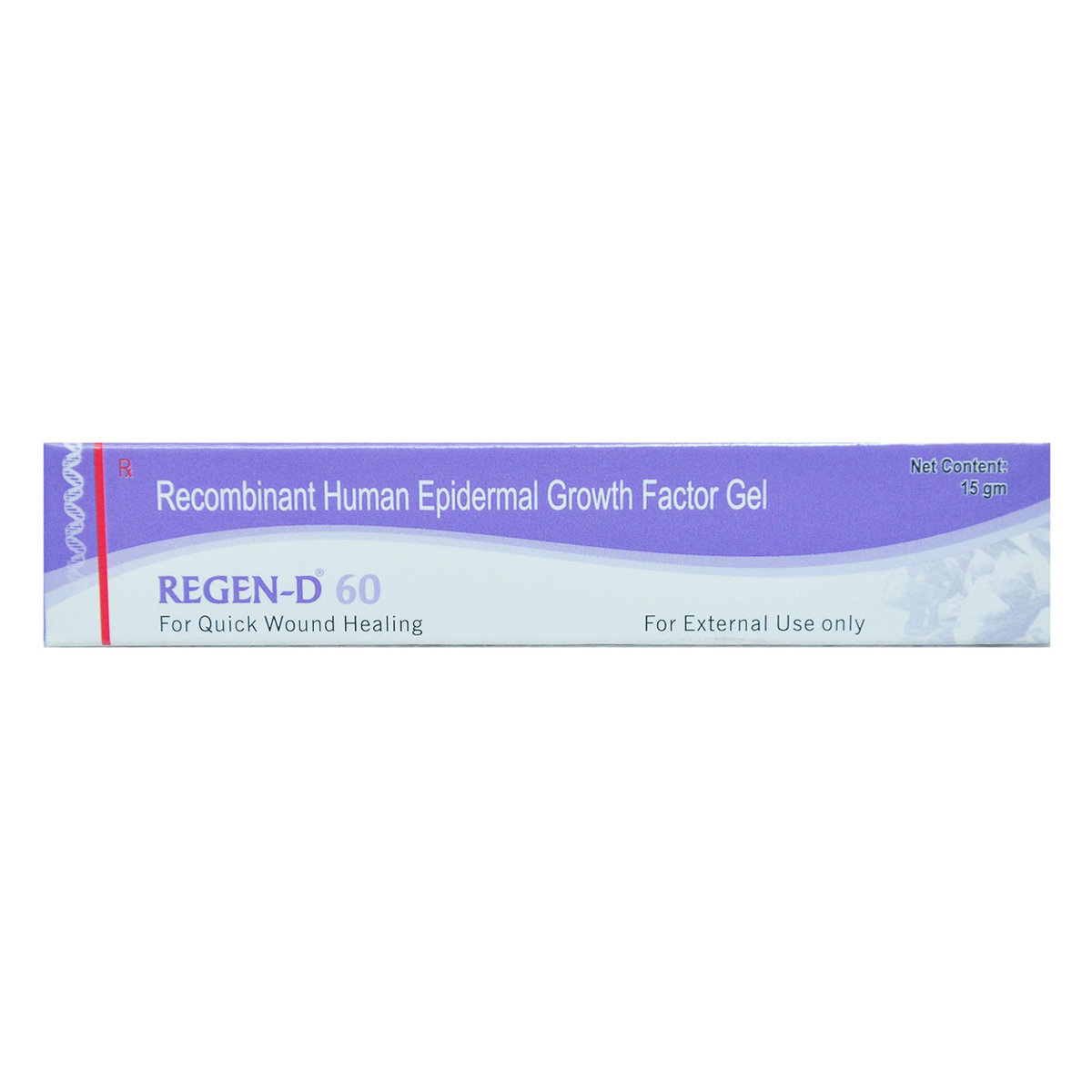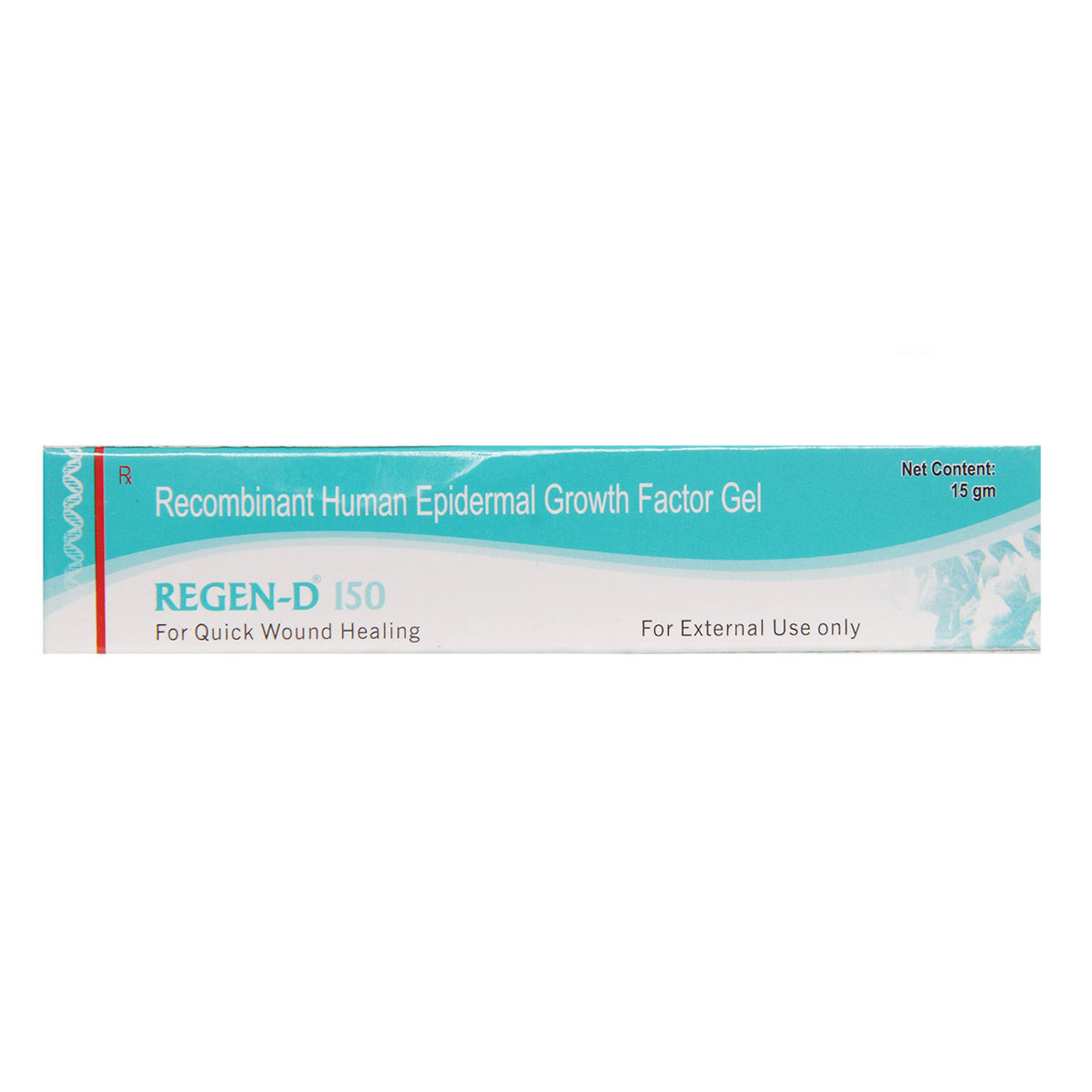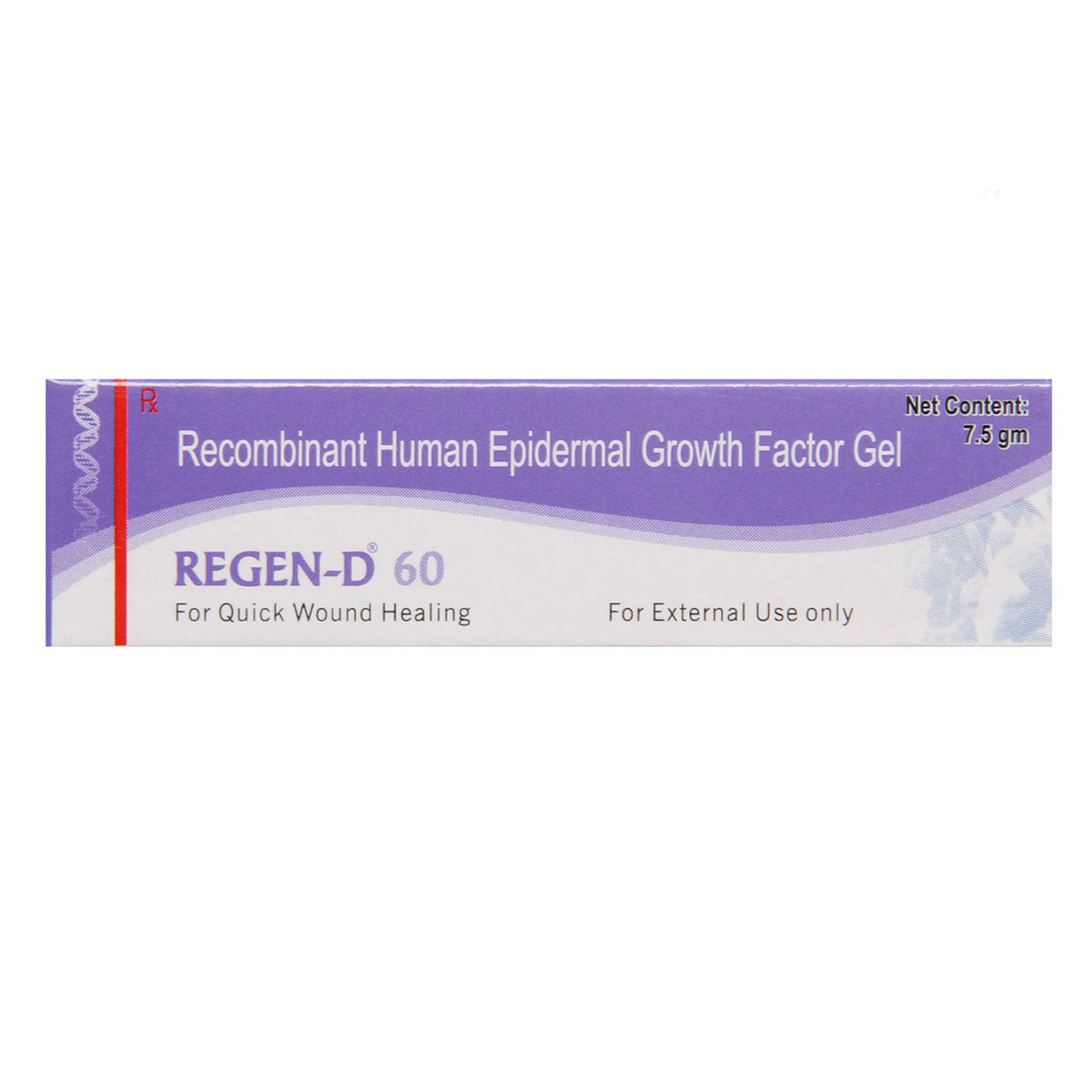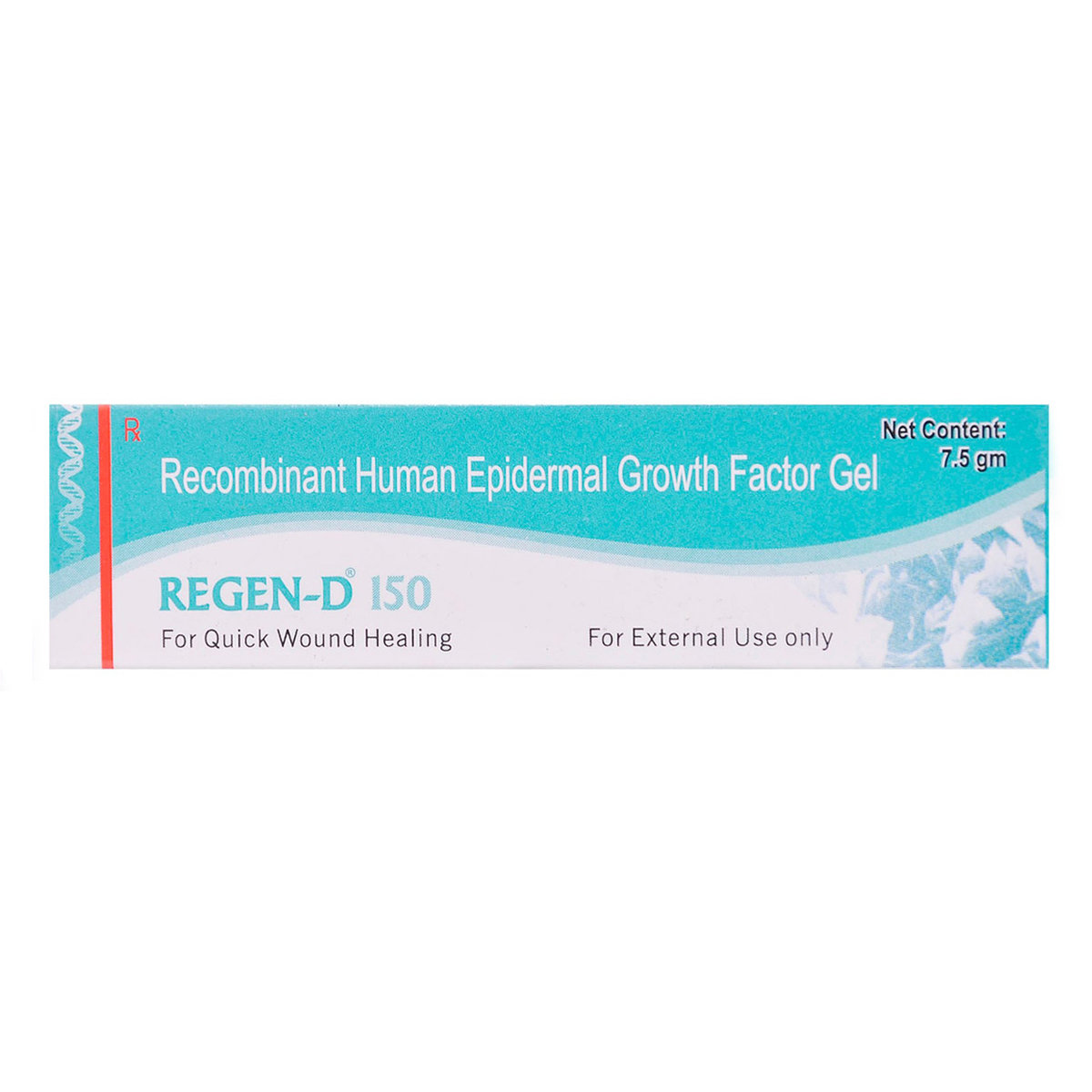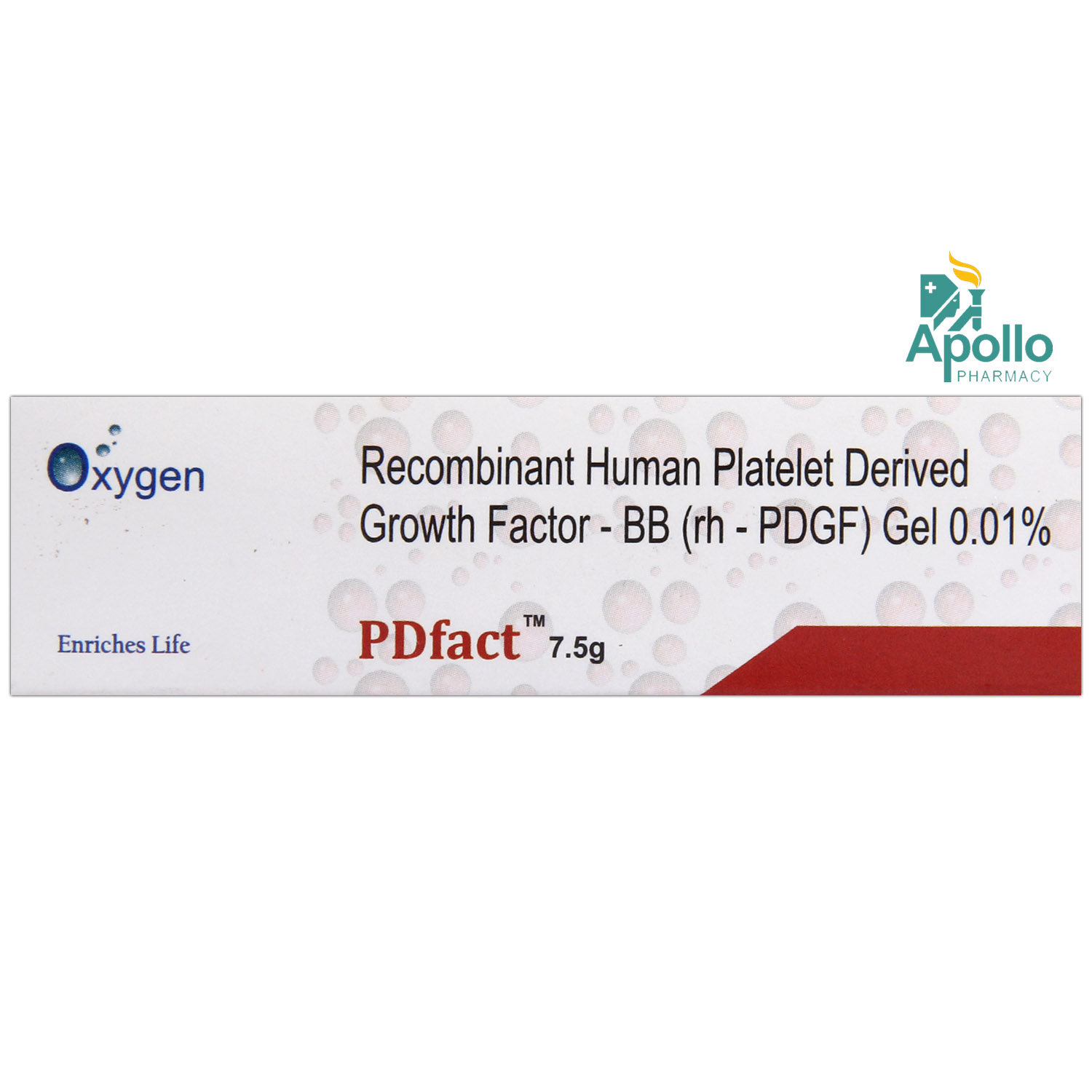Epidermal Growth Factor
About Epidermal Growth Factor
Epidermal Growth Factor belongs to the class of medications called ‘dermatological agents’ used to treat diabetic foot ulcers. A diabetic foot ulcer is an open wound in diabetic patients that occur due to uncontrolled diabetes. It appears as a red crater in the skin. It mostly affects the bottom or top of the foot and the tip of the toe.
Epidermal Growth Factor contains ‘epidermal growth factor’ which is a protein that can stimulate cell growth. It acts by releasing a growth factor that can promote tissue repair, and skin regeneration (formation of healthy skin), and accelerate wound healing. These effects help to reduce skin ulcers in diabetic foot ulcer patients.
You should use this medicine exactly as prescribed by the doctor. The common side effects of Epidermal Growth Factor are skin irritation, itching, and a burning sensation at the application site. These side effects are usually mild and temporary. However, if any of these side effects persist or get worse, inform your doctor immediately.
It is not recommended to take Epidermal Growth Factor if you are allergic to any contents of it. Epidermal Growth Factor should be used with caution in people using anticancer drugs and immune suppressant drugs. Epidermal Growth Factor should be used with caution in children, pregnant women, breastfeeding mothers, and elderly patients. Epidermal Growth Factor may not interact with alcohol and may not affect your ability to drive.
Uses of Epidermal Growth Factor
Medicinal Benefits
Epidermal Growth Factor is used in the treatment of diabetic foot ulcers. It acts by increasing the rate of wound healing and the formation of healthy skin. It is usually well-tolerated. In combination with standard treatment for diabetic foot ulcers, Epidermal Growth Factor can promote partial and complete wound healing and prevent amputation. It can also be used to treat trauma or surgical wounds, abnormal scars, radiation or chemotherapy-induced dermatitis (skin inflammation), reducing skin ageing, and treating other skin lesions.
Directions for Use
Storage
Side Effects of Epidermal Growth Factor
- Skin irritation
- Itchy skin
- Burning sensation at the application site
Drug Warnings
Epidermal Growth Factor is available for external use only. Do not use any heating pads on the feet. Make sure the wound is cleaned properly before applying the Epidermal Growth Factor gel. Before taking Epidermal Growth Factor, inform your doctor about all the prescription and non-prescription medicines you are taking. Let your doctor know immediately if the wound worsens, or there is no improvement within 4 weeks of using Epidermal Growth Factor.
Drug Interactions
Drug-Drug Interactions: Epidermal Growth Factor may interact with drugs that suppress the immune system (mycophenolate mofetil and azathioprine) and medicine used to treat cancer (mercaptopurine).
Drug-Food Interactions: No interactions found.
Drug-Disease Interactions: No interactions found.
Drug-Drug Interactions Checker List:
Safety Advice

Alcohol
safe if prescribedEpidermal Growth Factor does not interact with alcohol.

Pregnancy
cautionEpidermal Growth Factor should be used in pregnant women only if clinically needed and when benefits outweigh the risks.

Breast Feeding
cautionEpidermal Growth Factor should be used in breastfeeding women only if clinically needed and when benefits outweigh the risks.

Driving
safe if prescribedEpidermal Growth Factor does not affect your ability to drive a motor vehicle.

Liver
safe if prescribedEpidermal Growth Factor is probably safe when used in patients with liver diseases.

Kidney
safe if prescribedEpidermal Growth Factor is probably safe when used in patients with kidney diseases.

Children
cautionIt is not known whether Epidermal Growth Factor is safe in children or not. So, please consult your doctor.
Habit Forming
Diet & Lifestyle Advise
- Clean the ulcer each day and use the medicine as advised.
- Keep the ulcer dry and cover it with wound dressings.
- Take the medicines as advised by the medicines to control diabetes and maintain proper blood glucose levels. To speed-up wound healing, it is essential to control diabetes.
- Keep your leg elevated above the heart level while lying. It helps to increase blood flow to the leg.
- Avoid crossing your legs while sitting.
- Wear comfortable shoes and do not wear high heels until the wound completely heals.
- Wear compression stockings if necessary.
Special Advise
- Try to have HBA1C every 2-3 months for monitoring your overall blood sugar level.
- If you have diabetes and your wound is not healing properly, try to contact an endocrinologist or a skin specialist.
- Before undergoing any planned surgery, let your doctor know that you are using Epidermal Growth Factor.
Patients Concern
Disease/Condition Glossary
Diabetic foot ulcers: It is a major complication of diabetes mellitus. It occurs when the diabetes level becomes uncontrollable due to inadequate treatment. In this condition, the skin tissues break down and expose the skin layer's inner parts, which appears as a red crater in the skin. There is also damage to the nerves and decreased blood supply to the damaged foot, which further delays wound healing. It mostly affects the bottom or top of the foot and the tip of the toe. It is one of the most common causes of hospitalization among diabetic patients.
FAQs
Epidermal Growth Factor contains ‘epidermal growth factor’ used to treat diabetic foot ulcers. It acts by releasing a growth factor that can promote tissue repair, skin regeneration (formation of healthy skin), and accelerate wound healing.
Epidermal Growth Factor is available for external use only. Do not use it on other skin rashes or lesions without discussing with your doctor. Do not use any heating pads on the feet. Make sure the wound is cleaned properly before applying the Epidermal Growth Factor gel.
The common side-effects of Epidermal Growth Factor are skin irritation, itching, and burning sensation at the application site. These side-effects are usually mild and temporary. However, if any of these side-effects persist or get worse, inform your doctor immediately.
Epidermal Growth Factor does not reduce blood glucose levels. It can only promote wound healing at faster rate and can treat diabetic foot ulcers. You should take antidiabetic medications to control diabetes.
In general, diabetic foot ulcers take a few weeks to a few months to completely heal. However, the wound healing rate depends on various factors such as blood glucose levels, caring for wounds, and the presence of other illness or conditions.



